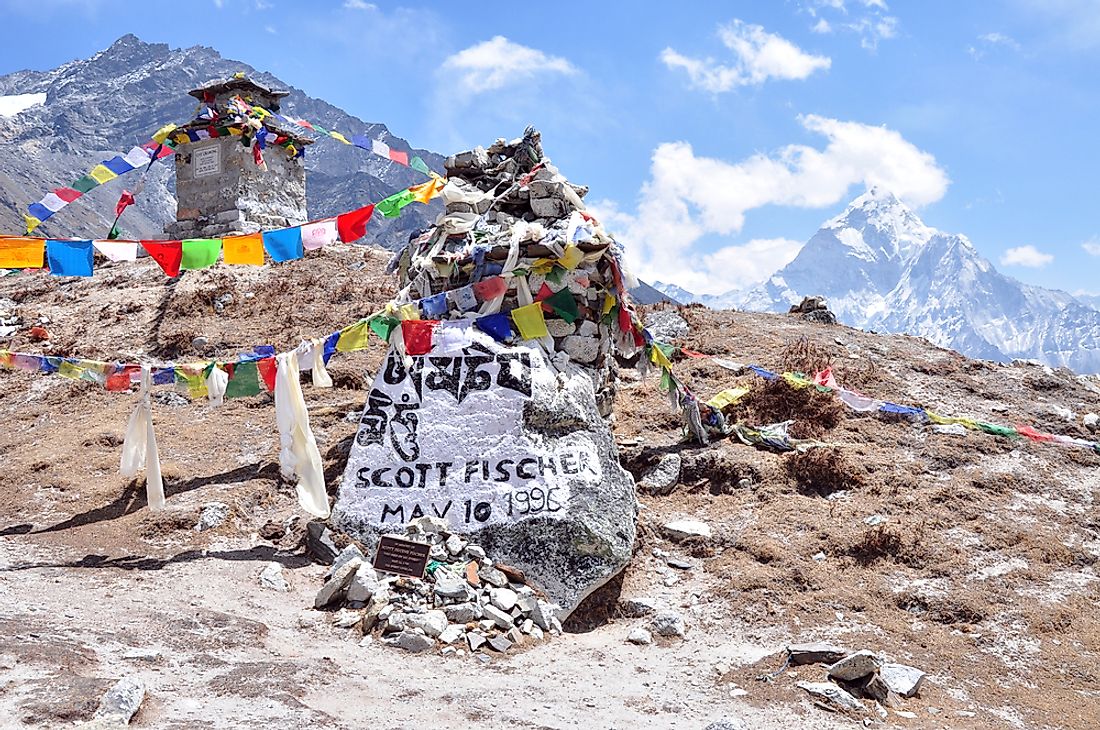The 1996 Mount Everest Disaster

Mount Everest is the highest mountain in the world with the highest point being 29,029 feet above sea level. The mountain is located in the Himalayas and was officially given its English name in 1865 by the Royal Geographical Society. The mountain draws many climbers every year, and most of them are experienced. There are two common routes used by climbers, first is the standard route in Nepal which approaches the peak from the south-east, and the other route in Tibet that approaches the peak from the northern side. The mountain presents dangers such as harsh weather and wind conditions, acute mountain sickness, and several dangers from avalanches. By 2016 there were more 200 corpses on the mountain.
The Tragedy
The tragedy that happened on Mount Everest in 1996 occurred from May 10 to 11. It happened when eight people who were caught up in a blizzard while attempting to climb down the mountain peak lost their lives. 12 people lost their lives trying to reach the peak over the entire season, making it the worst fatal year on the mountain at the time. More recently there has been the Mount Everest Avalanche of 2014 which saw 16 dying, and in April 2015, 18 people perished from several avalanches caused by the Nepal earthquake. Climbers from both the South and the North route perished during the 1996 tragedy, but the South events were reported widely.
Climbers
The list of climbers headed to the peak on May 10, 1996 via the South Col and Southeast Ridge comprised of two groups. The Adventure Consultants was led by Robb Hall and consisted of eight clients, two guides, and several Sherpas. Jon Krakauer, a journalist with the Outsider magazine, was part of the team. The team lost four members in the tragedy. The second team, the Mountain Madness expedition, was led by Scott Fisher and included three guides, eight clients, and several sherpas. They lost only one member. The Taiwanese expedition made up of five members, and a part of the Indo-Tibetan border police team, was climbing the North route.
Cause of the Tragedy
In 2004, researchers from the University of Toronto mentioned that a scrutiny of weather conditions on May 11th indicated that the severe weather caused oxygen levels to decline by approximately 6% causing a 14% reduction of oxygen intake by the body. The reduction in oxygen is as a result of reduction in pressure and not the composition of the air gases. The tragedy has been reviewed, and several chain of events has been noted to have caused the tragedy. The events include an unexpected storm which surprised the Mountaineers, and the team leaders’ decision to proceed to the peak after 2 pm even though the cut-off time is 2 pm. Several climbers ran out of oxygen and guides had to carry up bottled oxygen to stranded climbers in the storm. In addition, delays in securing fixed ropes in turn led to delay in reaching the peak. Lastly, two climbers became ill near the summit at 3 pm. The tragedy was widely published and scrutinized.
Publications About the Event
The survivors of the disaster have published several books on their experiences. Jon Krakauer published Into Thin Air in 1997, which became be a bestseller. One of the guides in Fischer's group named Anatoli Boukreev co-authored The Climb: Tragic Ambitions on Everest in 1997. Mike Trueman published the book titled The Storms: Adventure and Tragedy on Everest in 2015.







